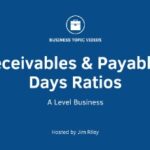Bond valuation is a technique for determining the theoretical fair value of a particular bond. Bond valuation includes calculating the present value of a bond’s future interest payments, also known as its cash flow, and the bond’s value upon maturity, also known as its face value or par value. Because a bond’s par value and interest payments are fixed, an investor uses bond valuation to determine what rate of return is required for a bond investment to be worthwhile. The premium account balance represents the difference (excess) between the cash received and the principal amount of the bonds. The premium account balance of $1,246 is amortized against interest expense over the twenty interest periods.

Use the semiannual market interest rate (i) and the number of semiannual periods (n) that were used to calculate the present value of the interest payments. Issuers usually quote bond prices as percentages of face value—100 means 100% of face value, 97 means a discounted price of 97%of face value, and 103 means a premium price of 103% of face value. For example, one hundred $1,000 face value bonds issued at 103 have a price of $103,000 (100 bonds x $1,000 each x 103%). Regardless of the issue price, at maturity the issuer of the bonds must pay the investor(s) the face value (or principal amount) of the bonds. Computing long-term bond prices involves finding present values using compound interest. Buyers and sellers negotiate a price that yields the going rate of interest for bonds of a particular risk class.
Bonds Payable Journal Entry Example [Debit, Credit]
As with the straight‐line method of amortization, at the maturity of the bonds, the discount account’s balance will be zero and the bond’s carrying value will be the same as its principal amount. See Table 2 for interest expense and carrying values over the life of the bond calculated using the effective interest method of amortization . A difference between face value and issue price exists whenever the market rate of interest for similar bonds differs from the contract rate of interest on the bonds.
How are bonds payable valued on the balance sheet?
Thus, bonds payable appear on the liability side of the company's balance sheet. Generally, bonds payable fall in the non-current class of liabilities. Bonds can be issued at a premium, at a discount, or at par. Their pricing depends on the difference between its coupon rate and the market yield on issuance.
When the bond matures, the discount will be zero and the bond’s carrying value will be the same as its principal amount. The discount amortized for the last payment may be slightly different based on rounding. See Table 1 for interest expense calculated using the straight‐line method of amortization and carrying value calculations over the life of the bond.
Bond Valuation
Those who are seeking a higher return and have the stomach for moderate risk could look for a high-quality short- or intermediate-term bond fund. Those with longer time horizons and a higher risk tolerance can seek the best long-term growth through a multi-sector bond fund with the potential for higher yields. The current value of a bond is determined at any point by totaling expected future coupon payments and adding that to the present value of the amount of principal that will be paid at maturity. Another way to consider this problem is to note that the total borrowing cost is increased by the $7,722 discount, since more is to be repaid at maturity than was borrowed initially. It is reasonable that a bond promising to pay 9% interest will sell for more than its face value when the market is expecting to earn only 8% interest.
- The income statement for all of 20X3 would include $6,294 of interest expense ($3,147 X 2).
- Unlike stocks, bonds are composed of an interest (coupon) component and a principal component that is returned when the bond matures.
- The carrying value of a bond is not equal to the bond payable amount unless the bond was issued at par.
- Because a bond’s par value and interest payments are fixed, an investor uses bond valuation to determine what rate of return is required for a bond investment to be worthwhile.
The semiannual interest paid to bondholders on Dec. 31 is $450 ($10,000 maturity amount of bond × 9% coupon interest rate × 6/ 12 for semiannual payment). The $19 difference between the $469 interest expense and the $450 cash payment is the amount of the discount amortized. The entry on December 31 to record the interest payment using the effective interest method of amortizing interest is shown on the following page. A bond’s face value, or par value, is the amount an issuer pays to the bondholder once a bond matures. Depending on these factors, an investor may end up purchasing a bond at par, below par, or above par. For example, a bond with a $1,000 face value bought for $950 was purchased below par.
Issuing Bonds at a Discount
Income investors should take a more conservative approach, such as an investment-grade short-term bond fund. For long-term growth, an investor may seek out a multi-sector bond fund that could offer higher yields. Depending on how far in the future the maturity date is from the present date, bonds https://kelleysbookkeeping.com/free-accounting-software-for-small-business/ payable are often segmented into “Bonds payable, current portion” and “Bonds payable, non-current portion”. Bonds are an agreement in which the issuer obtains financing in exchange for promising to make interest payments in a timely manner and repay the principal amount to the lender at maturity.
These interest rates represent the market interest rate for the period of time represented by “n”. The present value of a bond is calculated by discounting the bond’s future cash payments by the current market interest rate. Bond valuation looks at discounted cash flows at their net present value if held to maturity. Duration instead measures a Valuing Bonds Payable bond’s price sensitivity to a 1% change in interest rates. Longer-term bonds will also have a larger number of future cash flows to discount, and so a change to the discount rate will have a greater impact on the NPV of longer-maturity bonds as well. It is also the same as the price of the bond, and the amount of cash that the issuer receives.
